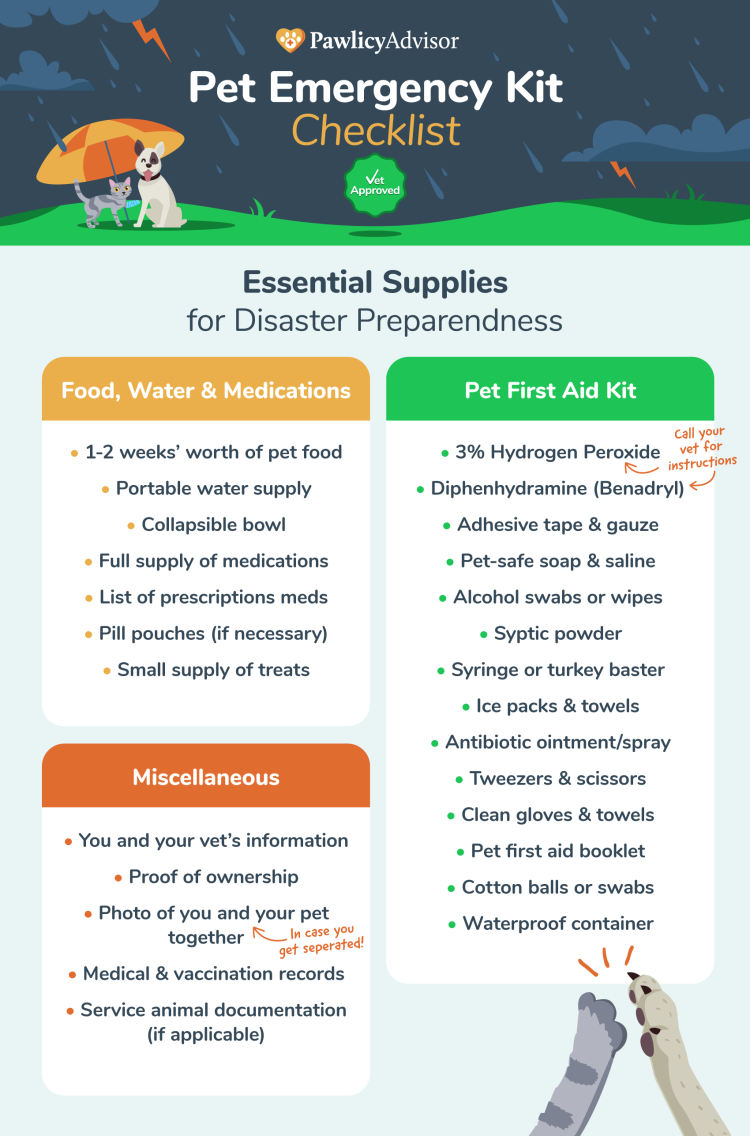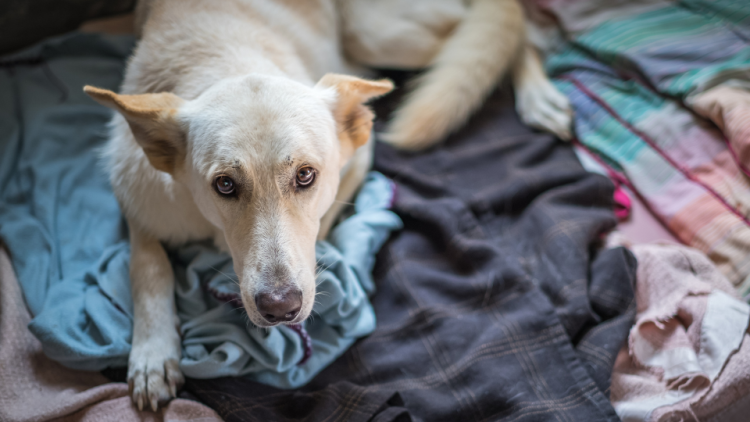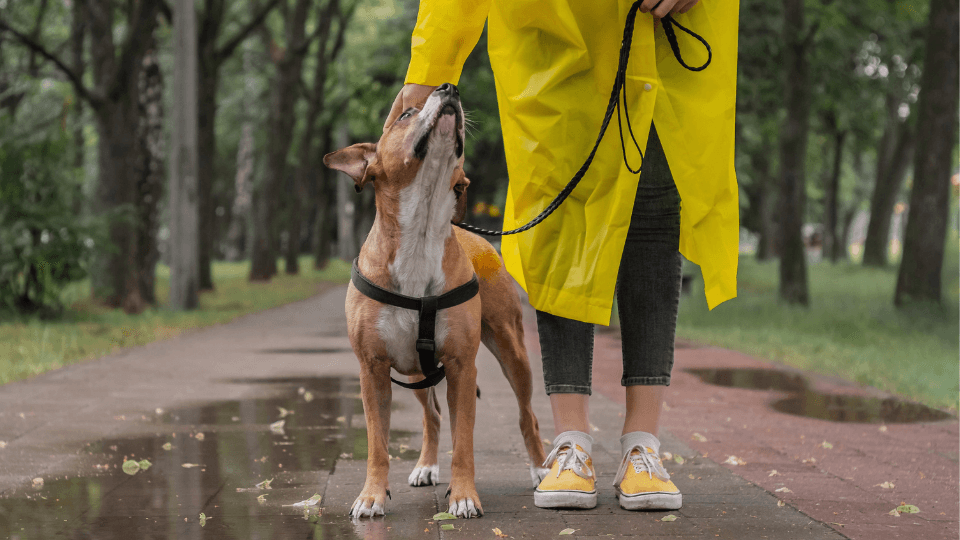As a pet owner, emergencies can be challenging to think about — but they happen. Even if you don’t live in a location that’s prone to natural disasters like hurricanes, fires, earthquakes, or tornados, you need an emergency plan for pet care should you have to evacuate or shelter in place.
One of the most important aspects of pet preparedness is creating an emergency kit or go-bag so your furry family member always has what they need. In honor of National Pet Preparedness Month, here’s an essential checklist to help you assemble the must-have supplies in a pet emergency kit.
We've broken each section into categories to help organize your checklist of pet supplies:
- How to Make a Pet Emergency Kit
- Food, Water, and Medications
- Pet First Aid Supplies
- Miscellaneous Pet Care Items
- Pet Documentation for Emergencies
- Pet Emergency Kit for Cars
- Pet Preparedness Tips
- Key Takeaways

Download Printer-Friendly Version
How to Make a Pet Emergency Kit
You can create a pet emergency kit out of almost any container. You can also purchase pet preparedness kits online. But most pet parents use a backpack, rucksack, or another type of carriable container that can fit several items and be picked up easily.
Cat and dog emergency kits should generally contain the same types of items, but there are some differences. For example, a cat emergency kit may include a supply of cat litter, whereas a dog emergency kit may include an extra-long leash.
Either way, be sure you are preparing for at least a 72-hour emergency. That means gathering enough supplies to care for and protect your pet for at least three days. Once you find a suitable container, here’s what you should put inside your kit.

Food, Water, Medications
Make sure your go-bag has all the essentials your pet needs to eat, drink, and survive a 72-hour emergency, including:
- One to two weeks’ worth of pet food
- Transportable water
- Collapsible bowl
- A full supply of medications
- A list of all the pet’s medications and when to take them
- Pill pouches (if needed)
- A supply of treats
Check the food, water, and medications in your kit regularly to ensure they haven’t expired. If you can’t get an extra supply of medication, rotate fresh medications in your pet’s emergency kit as you get them.
Water can be heavy to carry, so you may be tempted to leave it out. But even if you believe you’ll have access to water in the event of an emergency, it never hurts to have some extra water on hand.
Pet First Aid Supplies
It’s always a good idea to keep a first aid kit in your home in case of emergencies. But you should also create a separate one for your pets. Here are some of the items you could include in your pet first aid kit:
- 3% hydrogen peroxide
- Adhesive tape
- Alcohol swabs or wipes
- An oral syringe or turkey baster
- Antibiotic ointment/spray
- Clean gloves
- Cotton balls or swabs
- Diphenhydramine or benadryl (antihistamine)
- Gauze roll
- Ice packs
- Pet first aid booklet
- Pet-safe soap or detergent
- Saline eye solution
- Scissors with a blunt end
- Styptic powder (to stop bleeding)
- Towels
- Tweezers
- Waterproof container for medical supplies
Be sure to check your pet first aid supplies regularly and update them as needed. Don’t include opened bottles or containers of first aid supplies, as these can expire quickly.
Miscellaneous Pet Care Items
You should also include some miscellaneous items in your pet emergency kit. Focus on the essentials first, such as an extra leash and collar for a dog.
Some items, like blankets, may not seem essential. But they could make your pet more comfortable if you must travel or if you don’t have access to regular services like running water, heat, and electricity.
Here’s what to include:
- Blanket or pet bed
- Cat litter and pan
- Extra pet identification tags
- Grooming equipment
- Leash and collar or harness
- Paper towels
- Paw protectors (for walking on ice or snow)
- Pee pads
- Pet life jacket
- Photographs of you and your pet (in case you get separated)
- Plastic waste bags
- Small flashlight with extra batteries
- Familiar toy
- Warm clothing
If you haven’t already done so, consider microchipping your pet as a disaster preparedness measure. It’s heart-wrenching to get separated from pets during a natural disaster. If your pet is microchipped, anyone who finds them can bring them to a local animal shelter where they can be scanned, and you can be reunited.

Pet Documentation for Emergencies
You should include any pertinent pet documents in your emergency kit. If anything should happen to you, these documents could be lifesaving for your pet, especially if they are hurt or in distress:
- Information about your veterinarian:
- Phone number
- The veterinarian’s name
- The name of the vet’s clinic
- The address of the clinic
- Contact information for local emergency veterinary clinics
- Information about you:
- Phone number
- Name
- Address
- Emergency contact information (if you aren’t available)
- Legal trust documentation (who your pet should go to if you can’t care for them)
- Medical records
- Proof of ownership
- Support animal documentation (if applicable)
- Vaccination documentation
- Waterproof container for documents
The CDC offers a free, printable “Pet Boarding Instruction” template to help you assemble your pet’s information and store it.
There may be additional documents that you can include, depending on your pet’s needs. For example, you can leave specific instructions on how to care for your pet if you aren’t there to do so. You can also include information about your pet’s medical conditions, history, and behaviors.
Pet Emergency Kits for Cars
If you frequently travel with your pets, you should consider creating a special pet emergency kit for your car. A car kit could also be useful if you need to evacuate by car during an emergency situation. Natural disasters like floods, hurricanes, and earthquakes may require you to travel long distances by car.
If you want to be prepared to travel with your pet, here are some supplies you can put in your car to keep you and your pet safe:
- Blinking LED collar
- Crash-tested kennel
- Foldable pet carrier
- Foldable ramp (for pets with mobility issues)
- Grooming wipes
- Reflective pet clothing
- Road flares
- Safety harness (pet seat belt)
- Seat covers
- Spill-minimizing bowls
- Window shades (to protect against overheating)
Ready.gov also recommends owners make an evacuation plan for their pet. Many shelters and hotels don’t allow pets. Choose an evacuation location that allows pets before a disaster strikes, so you know you’ll be able to find accommodations.
You can also work with your neighbors, friends, and relatives to ensure someone will be available to care for your pets if you are unable to do so.
Pet Preparedness Tips
You may be tempted to put disaster preparedness out of your mind once you assemble your pet emergency kit. But if you bring home additional pets, make sure you have supplies in your kit for them as well. Many of the items you include in your kit may also need to be updated occasionally.
For example, unused household batters can last anywhere from five to 20 years in storage, depending on the brand. Medications, cleaners, and other packaged products may lose their potency over time.
Check the expiration dates of all the items in your pet emergency kit before sealing it up. You can also put a reminder on your calendar to check your pet emergency kit. This will help you ensure that you always have items that are ready to use if the worst happens.
Final Thoughts
Be sure to get your pet insured before a natural disaster strikes or an emergency scenario occurs. Insurance is a crucial element of pet preparedness. The average cost for unexpected veterinary care for dogs and cats ranges from $800 to $1,500, yet only 39% of Americans have enough in their savings to cover a $1,000 emergency. This leaves many pet owners faced with a tough decision regarding medical treatments and the cost of care.
However, with pet insurance, you can get reimbursed for emergency vet costs at any clinic you choose. Even if you have to evacuate to another state, you can access critical medical care your pet may need at a nearby vet. Financial strain is the last thing you need to worry about during a disaster when health and safety are top priority. So, extend health coverage to the four-legged member of your family for peace of mind during an emergency time.
Key Takeaways
- Pack a go-bag containing pet preparedness supplies for 72-hour emergency scenarios.
- Tailor your cat or dog emergency kit based on the type of natural disasters common in the location and your pet's unique medical needs.
- Remember to update the items in the pet emergency kit as needed and include critical roadside gear for long-distance evactuations by car.
- Add pet insurance to your checklist of items for ultimate protection and peace of mind.
